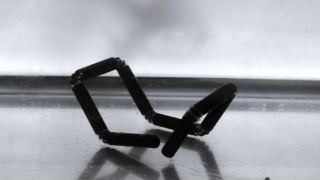4D printing touted as way of the future
Skylar Tibbits, an architect, designer and computer scientist, in a recent TED interview unveiled the concept of 4D printing which allows objects to self-assemble and adapt.
While a 3D printer builds things up layer by layer, Tibbits has developed a technology where chunks of material start separated and then intelligently arrange themselves into a pre-programmed object, and furthermore, create objects that can change after they are first printed meaning they are self adaptive.
Tibbits’ latest technology uses water to activate and power strands of material that fold themselves into desired shapes. It will be developed in part by the new MIT Self Assembly Lab to be headed by Tibbits and announced during his talk in association with Minnesota based company Stratasys and a Israel-based maker of 3D printers.
It can also be used on multiple types of materials rather than simply one type of plastic, as with other 3D printers. Practical uses could include furniture, construction and eventually aerospace development. Tibbits believes that the technology could be most useful for astronauts in space.
Tibbits looks at 4D printing as the future of manufacturing, and not just manufacturing small objects, but large construction projects, such as buildings. He says that current methods of manufacturing have become ever more complex, requiring more and more parts to go into one completed piece, at the cost of more time spent on construction.
CAD systems developer Autodesk, 3 printing company Stratasys, and biological  printing specialists Organovo are already involved in collaborative exploratory projects with MIT. The next step in the development is to print sheets, working up whole structures and also looking at alternative energy sources to water.
printing specialists Organovo are already involved in collaborative exploratory projects with MIT. The next step in the development is to print sheets, working up whole structures and also looking at alternative energy sources to water.



